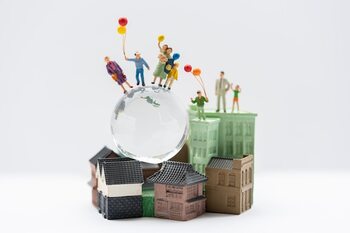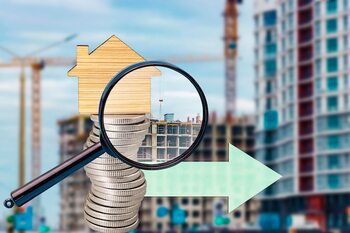Discover the Impact of Sustainability on Real Estate Appreciation

Discover how sustainability has become a key factor in increasing real estate value. In a world that increasingly values environmental care, properties located in ecological areas with green certifications are gaining ground in the market. This article will take you to explore the best areas where sustainability not only enhances quality of life but also boosts the value of your investment. Don't miss this opportunity to learn how you can benefit!
1. The connection between sustainability and real estate appreciation
Sustainability and real estate appreciation are intrinsically linked in a market where buyers are increasingly aware of their environmental impact. Properties that incorporate sustainable practices, from the use of renewable energy to eco-friendly materials, not only respond to a growing demand from consumers but also benefit from an increase in their value. This phenomenon is due to the fact that green homes tend to have lower operating costs and a reduced environmental impact, which is particularly appealing to those seeking investments that are not only profitable but also responsible.
Furthermore, the location of a property plays a crucial role in this context. Areas that prioritize sustainable development, such as urban parks, efficient public transportation systems, and access to green spaces, not only enhance the quality of life for their residents but also become magnets for interested buyers. As more people value living in healthy and planet-friendly environments, properties situated in these areas experience significant appreciation in their value. Thus, investing in sustainable real estate not only represents a smart financial decision but also a step towards a greener future.
2. Emerging areas: where to invest for their ecological focus
Emerging areas that prioritize an ecological approach are gaining relevance in the real estate market, becoming true gems for investors. These areas are characterized by urban development that respects nature, promoting green spaces, renewable energy, and sustainable infrastructure. Regions like some parts of Latin America and Eastern Europe have begun to implement policies that encourage the construction of eco-friendly housing, which not only improves the quality of life for their residents but also increases the demand for properties in these locations. Investing in these areas is not only a smart financial decision but also a commitment to a more sustainable future.
Additionally, the valuation of properties in these emerging areas is linked to their accessibility and connectivity to essential services. Areas that offer efficient public transportation, as well as proximity to parks and recreational spaces, increasingly attract environmentally conscious buyers. The trend toward more sustainable lifestyles has led many developers to focus on creating integrated communities that offer a balance between urban comfort and respect for the natural environment. This combination not only helps mitigate environmental impact but also ensures steady growth in real estate value, making these regions an attractive option for those seeking profitable and responsible investments.
3. Economic benefits of living in sustainable communities
Sustainable communities offer significant economic benefits that can notably increase real estate value. By adopting eco-friendly practices, these communities not only attract buyers interested in a more responsible lifestyle but also tend to experience less fluctuation in their market prices. This is because properties located in areas where the environment and quality of life are prioritized are usually in higher demand, leading to greater stability and long-term appreciation potential. Thus, living in a sustainable community not only contributes to the well-being of the planet but also represents a secure investment for homeowners.
Additionally, sustainable communities generate direct economic savings for their residents. Thanks to the implementation of green technologies such as solar panels, rainwater harvesting systems, and energy efficiency, the costs associated with utility services tend to be considerably lower. These savings translate into reduced monthly expenses, which is an additional attraction for those looking to buy or rent properties in these areas. As consumers become increasingly aware of the financial impact associated with energy consumption and natural resources, choosing to live in a sustainable environment not only improves home quality but also provides tangible economic benefits.
4. Green certifications: what are they and why do they matter?
Green certifications are quality seals that recognize compliance with environmental standards in the construction and operation of buildings. Institutions such as LEED, BREEAM, and ENERGY STAR evaluate aspects such as energy efficiency, responsible water use, and carbon emission reduction. These certifications not only ensure a lower environmental impact but also promote healthier spaces for their occupants, resulting in a better quality of life. In an increasingly competitive real estate market, having these accreditations can be a key differentiator to attract environmentally conscious buyers.
The importance of green certifications lies in their ability to increase the value of a property. Current buyers are willing to pay a premium for homes that offer sustainable features, as they seek investments that are not only economically profitable but also socially and environmentally responsible. Furthermore, properties with green certifications often have lower operating costs due to their energy efficiency, resulting in long-term savings for owners. Thus, investing in sustainable real estate not only contributes to the well-being of the planet but also represents a smart financial decision in a world where sustainability is increasingly valued.
5. Sustainable urban projects: notable examples in Costa Rica
In Costa Rica, sustainability has left a significant mark on urban development, with projects that have become examples to follow both nationally and internationally. One of the most notable is the "Distrito de Innovación," located in San José, which combines spaces for green offices, housing, and recreational areas. This project not only promotes energy efficiency and the use of recyclable materials but also integrates green zones that foster biodiversity and improve air quality, thus enhancing the area's appeal for both investors and residents. The careful planning and focus on sustainability have contributed to a notable increase in real estate value in the area.
Another emblematic example is "La Ciudad Verde," designed to be a model of a sustainable community where public transportation and ecological infrastructures are prioritized. With solar panels on residential buildings and rainwater collection systems, this project aligns perfectly with current trends towards a more environmentally conscious lifestyle. As more people seek to live in environments that respect nature, properties within projects like this are increasingly valued, reflecting how sustainable urban initiatives can radically transform not only entire communities but also their respective real estate markets.
6. The role of the government in promoting sustainable areas
The role of the government in promoting sustainable areas is essential for real estate development that seeks to align with ecological criteria. Through public policies and regulations, authorities can incentivize developers to build properties that not only meet environmental standards but also encourage a more sustainable lifestyle. This includes creating tax incentives, grants, and financing programs for projects that incorporate clean technologies, green spaces, and energy efficiency. By establishing clear regulations and a long-term vision, governments can transform urban areas into healthier and more attractive environments for potential buyers and investors.
Additionally, the government has the responsibility to implement adequate infrastructures that support sustainability in communities. This involves investing in efficient public transportation, pedestrian areas, and bike lanes, as well as waste management systems that promote recycling and reduce environmental impact. By improving accessibility and the quality of urban space, the appeal of sustainable residential areas is increased. Public investments can also attract the private sector to participate in eco-friendly developments, which not only benefits the environment but also elevates real estate value by creating an environment where living is synonymous with both social and economic well-being.
7. Global trends in sustainability and their local impact
Sustainability has ceased to be a passing trend and has become a central pillar of urban development worldwide. Cities are adopting practices that promote energy efficiency, the use of renewable energy, and waste reduction, which not only improves the quality of the urban environment but also increases property value. As buyers become more aware of the environmental impact of their decisions, they seek homes that are not only aesthetically pleasing but also responsible. This shift in mindset is redefining what it means to live in a sustainable space and how this influences real estate appreciation.
At a local level, these global trends translate into unique opportunities for owners and investors. Areas that implement green initiatives, such as community gardens, efficient public transport, and sustainable recreational spaces, tend to attract a more environmentally conscious population. This phenomenon creates a virtuous circle: as more people wish to reside in these areas, the demand for sustainable properties increases, along with their value. In this context, understanding the local dynamics related to sustainability can be key to capitalizing on the potential growth of your real estate investment.
8. How to evaluate the added value of a sustainable property
Evaluating the appreciation of a sustainable property involves considering various factors that go beyond the physical characteristics of the property. Firstly, it is essential to analyze the location. Properties situated in areas with a focus on sustainability, such as those near parks, efficient public transportation systems, and communities that promote a healthy lifestyle, tend to have a higher value. Furthermore, urban developments that integrate eco-friendly practices and encourage the use of renewable energy not only attract environmentally conscious buyers but also generate increasing interest in the real estate market, which can translate into a significant increase in appreciation.
Another fundamental aspect to evaluate the added value is the green certification of the property. There are different internationally recognized standards, such as LEED or BREEAM, that ensure a property meets specific sustainability criteria. Certified houses or buildings tend to have lower energy consumption and lower operating costs, which is attractive to buyers and tenants. Additionally, properties with these certifications often have higher demand and can justify higher prices in the market. Finally, it is advisable to research local trends on sustainability and related government policies; positive changes in these aspects can directly influence the future value of a sustainable property.
9. Tips for smart investing in eco-friendly real estate
When investing in eco-friendly real estate, it is essential to conduct thorough research on the available green certifications and their impact on property appreciation. Certifications such as LEED (Leadership in Energy and Environmental Design) or BREEAM (Building Research Establishment Environmental Assessment Method) not only indicate that a property meets sustainability standards but can also enhance its market appeal. Consider investing in urban areas where green initiatives are being developed, as these zones tend to experience a steady increase in their value due to the growing demand for sustainable spaces.
Also, look for properties that incorporate sustainable technologies such as solar panels, rainwater collection systems, or recycled materials. These elements can not only reduce long-term operating costs but also attract environmentally conscious tenants and buyers. Finally, analyze the local environment; areas with access to public transportation, parks, and green spaces tend to have higher demand and can offer better returns on your investment. Adopting a proactive approach to sustainability will allow you to maximize profitability while contributing to the well-being of the planet.



